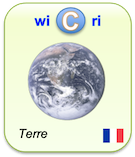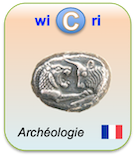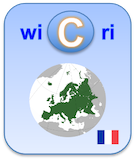Characterization of tephra deposits with limited exposure: the example of the two largest explosive eruptions at Nisyros volcano (Greece)
Identifieur interne : 000009 ( PascalFrancis/Checkpoint ); précédent : 000008; suivant : 000010Characterization of tephra deposits with limited exposure: the example of the two largest explosive eruptions at Nisyros volcano (Greece)
Auteurs : Celine Longchamp [Suisse] ; C. Bonadonna [Suisse] ; O. Bachmann [États-Unis] ; A. Skopelitis [Suisse]Source :
- Bulletin of volcanology : (Print) [ 0258-8900 ] ; 2011.
Descripteurs français
- Pascal (Inist)
- Wicri :
- geographic : Grèce.
English descriptors
- KwdEn :
Abstract
Explosive eruptions associated with tephra deposits that are only exposed in proximal areas are difficult to characterize. In fact, the determination of physical parameters such as column height, mass eruption rate, erupted volume, and eruption duration is mainly based on empirical models and is therefore very sensitive to the quality of the field data collected. We have applied and compared different modeling approaches for the characterization of the two main tephra deposits, the Lower Pumice (LP) and Upper Pumice (UP) of Nisyros volcano, Greece, which are exposed only within 5 km of the probable vent. Isopach and isopleth maps were compiled for two possible vent locations (on the north and on the south rim of the caldera), and different models were applied to calculate the column height, the erupted volume, and the mass eruption rate. We found a column height of about 15 km above sea level and a mass eruption rate of about 2×107 kg/s for both eruptions regardless of the vent location considered. In contrast, the associated wind velocity for both UP and LP varied between 0 and 20 m/s for the north and south vent, respectively. The derived erupted volume for the south vent (considered as the best vent location) ranges between 2 and 27 × 108 m3 for the LP and between 1 and 5×108 m3 for the UP based on the application of four different methods (integration of exponential fit based on one isopach line, integration of exponential and power-law fit based on two isopach lines, and an inversion technique combined with an advection-diffusion model). The eruption that produced the UP could be classified as sub-plinian. Discrepancies associated with different vent locations are smaller than the discrepancies associated with the use of different models for the determination of erupted mass, plume height, and mass eruption rate. Proximal outcrops are predominantly coarse grained with >90 wt% of the clasts ranging between -6φ and 0φ. The associated total grainsize distribution is considered to result from a combination of turbulent fallout from both the plume margins and the umbrella region, and as a result, it is fines-depleted. Given that primary deposit thickness observed on Nisyros for both LP and UP is between 1 and 8 m, if an event of similar scale were to happen again, it would have a significant impact on the entire island with major damage to infrastructure, agriculture, and tourism. Neighboring islands and the continent could also be significantly affected.
Affiliations:
- Suisse, États-Unis
- Canton de Genève, Canton de Vaud, Washington (État)
- Genève, Lausanne, Seattle
- Université de Genève, Université de Lausanne, Université de Washington
Links toward previous steps (curation, corpus...)
Links to Exploration step
Pascal:12-0003934Le document en format XML
<record><TEI><teiHeader><fileDesc><titleStmt><title xml:lang="en" level="a">Characterization of tephra deposits with limited exposure: the example of the two largest explosive eruptions at Nisyros volcano (Greece)</title><author><name sortKey="Longchamp, Celine" sort="Longchamp, Celine" uniqKey="Longchamp C" first="Celine" last="Longchamp">Celine Longchamp</name><affiliation wicri:level="4"><inist:fA14 i1="01"><s1>IGAR, Université de Lausanne, Quartier UNIL-Sorge, Bâtiment Amphipôle 338</s1><s2>1015 Lausanne</s2><s3>CHE</s3><sZ>1 aut.</sZ></inist:fA14><country>Suisse</country><placeName><settlement type="city">Lausanne</settlement><region nuts="3" type="region">Canton de Vaud</region></placeName><orgName type="university">Université de Lausanne</orgName><placeName><settlement type="city">Lausanne</settlement><region nuts="3" type="region">Canton de Vaud</region></placeName></affiliation></author><author><name sortKey="Bonadonna, C" sort="Bonadonna, C" uniqKey="Bonadonna C" first="C." last="Bonadonna">C. Bonadonna</name><affiliation wicri:level="4"><inist:fA14 i1="02"><s1>Section des sciences de la Terre et de l'environnement, Université de Geneve, 13, rue des Maraichers</s1><s2>1205 Geneva</s2><s3>CHE</s3><sZ>2 aut.</sZ><sZ>4 aut.</sZ></inist:fA14><country>Suisse</country><wicri:noRegion>1205 Geneva</wicri:noRegion><orgName type="university">Université de Genève</orgName><placeName><settlement type="city">Genève</settlement><region nuts="3" type="region">Canton de Genève</region></placeName></affiliation></author><author><name sortKey="Bachmann, O" sort="Bachmann, O" uniqKey="Bachmann O" first="O." last="Bachmann">O. Bachmann</name><affiliation wicri:level="4"><inist:fA14 i1="03"><s1>Department of Earth and Space Sciences, University of Washington, Mailstop 351310</s1><s2>Seattle, WA 98195-1310</s2><s3>USA</s3><sZ>3 aut.</sZ></inist:fA14><country>États-Unis</country><placeName><region type="state">Washington (État)</region><settlement type="city">Seattle</settlement></placeName><orgName type="university">Université de Washington</orgName></affiliation></author><author><name sortKey="Skopelitis, A" sort="Skopelitis, A" uniqKey="Skopelitis A" first="A." last="Skopelitis">A. Skopelitis</name><affiliation wicri:level="4"><inist:fA14 i1="02"><s1>Section des sciences de la Terre et de l'environnement, Université de Geneve, 13, rue des Maraichers</s1><s2>1205 Geneva</s2><s3>CHE</s3><sZ>2 aut.</sZ><sZ>4 aut.</sZ></inist:fA14><country>Suisse</country><wicri:noRegion>1205 Geneva</wicri:noRegion><orgName type="university">Université de Genève</orgName><placeName><settlement type="city">Genève</settlement><region nuts="3" type="region">Canton de Genève</region></placeName></affiliation></author></titleStmt><publicationStmt><idno type="wicri:source">INIST</idno><idno type="inist">12-0003934</idno><date when="2011">2011</date><idno type="stanalyst">PASCAL 12-0003934 INIST</idno><idno type="RBID">Pascal:12-0003934</idno><idno type="wicri:Area/PascalFrancis/Corpus">000008</idno><idno type="wicri:Area/PascalFrancis/Curation">000032</idno><idno type="wicri:Area/PascalFrancis/Checkpoint">000009</idno><idno type="wicri:explorRef" wicri:stream="PascalFrancis" wicri:step="Checkpoint">000009</idno></publicationStmt><sourceDesc><biblStruct><analytic><title xml:lang="en" level="a">Characterization of tephra deposits with limited exposure: the example of the two largest explosive eruptions at Nisyros volcano (Greece)</title><author><name sortKey="Longchamp, Celine" sort="Longchamp, Celine" uniqKey="Longchamp C" first="Celine" last="Longchamp">Celine Longchamp</name><affiliation wicri:level="4"><inist:fA14 i1="01"><s1>IGAR, Université de Lausanne, Quartier UNIL-Sorge, Bâtiment Amphipôle 338</s1><s2>1015 Lausanne</s2><s3>CHE</s3><sZ>1 aut.</sZ></inist:fA14><country>Suisse</country><placeName><settlement type="city">Lausanne</settlement><region nuts="3" type="region">Canton de Vaud</region></placeName><orgName type="university">Université de Lausanne</orgName><placeName><settlement type="city">Lausanne</settlement><region nuts="3" type="region">Canton de Vaud</region></placeName></affiliation></author><author><name sortKey="Bonadonna, C" sort="Bonadonna, C" uniqKey="Bonadonna C" first="C." last="Bonadonna">C. Bonadonna</name><affiliation wicri:level="4"><inist:fA14 i1="02"><s1>Section des sciences de la Terre et de l'environnement, Université de Geneve, 13, rue des Maraichers</s1><s2>1205 Geneva</s2><s3>CHE</s3><sZ>2 aut.</sZ><sZ>4 aut.</sZ></inist:fA14><country>Suisse</country><wicri:noRegion>1205 Geneva</wicri:noRegion><orgName type="university">Université de Genève</orgName><placeName><settlement type="city">Genève</settlement><region nuts="3" type="region">Canton de Genève</region></placeName></affiliation></author><author><name sortKey="Bachmann, O" sort="Bachmann, O" uniqKey="Bachmann O" first="O." last="Bachmann">O. Bachmann</name><affiliation wicri:level="4"><inist:fA14 i1="03"><s1>Department of Earth and Space Sciences, University of Washington, Mailstop 351310</s1><s2>Seattle, WA 98195-1310</s2><s3>USA</s3><sZ>3 aut.</sZ></inist:fA14><country>États-Unis</country><placeName><region type="state">Washington (État)</region><settlement type="city">Seattle</settlement></placeName><orgName type="university">Université de Washington</orgName></affiliation></author><author><name sortKey="Skopelitis, A" sort="Skopelitis, A" uniqKey="Skopelitis A" first="A." last="Skopelitis">A. Skopelitis</name><affiliation wicri:level="4"><inist:fA14 i1="02"><s1>Section des sciences de la Terre et de l'environnement, Université de Geneve, 13, rue des Maraichers</s1><s2>1205 Geneva</s2><s3>CHE</s3><sZ>2 aut.</sZ><sZ>4 aut.</sZ></inist:fA14><country>Suisse</country><wicri:noRegion>1205 Geneva</wicri:noRegion><orgName type="university">Université de Genève</orgName><placeName><settlement type="city">Genève</settlement><region nuts="3" type="region">Canton de Genève</region></placeName></affiliation></author></analytic><series><title level="j" type="main">Bulletin of volcanology : (Print)</title><title level="j" type="abbreviated">Bull. volcanol. : (Print)</title><idno type="ISSN">0258-8900</idno><imprint><date when="2011">2011</date></imprint></series></biblStruct></sourceDesc><seriesStmt><title level="j" type="main">Bulletin of volcanology : (Print)</title><title level="j" type="abbreviated">Bull. volcanol. : (Print)</title><idno type="ISSN">0258-8900</idno></seriesStmt></fileDesc><profileDesc><textClass><keywords scheme="KwdEn" xml:lang="en"><term>Greece</term><term>advection</term><term>calderas</term><term>clasts</term><term>diffusion</term><term>duration</term><term>explosive eruptions</term><term>fallout</term><term>fine-grained materials</term><term>grains</term><term>inverse problem</term><term>islands</term><term>isopleth maps</term><term>models</term><term>outcrops</term><term>plinian-type eruptions</term><term>plumes</term><term>pumice</term><term>quality</term><term>sea level</term><term>tephra</term><term>thickness</term><term>velocity</term><term>vents</term><term>volcanoes</term><term>winds</term></keywords><keywords scheme="Pascal" xml:lang="fr"><term>Téphra</term><term>Eruption explosive</term><term>Volcan</term><term>Durée</term><term>Modèle</term><term>Qualité</term><term>Ponce</term><term>Event</term><term>Carte isoplèthe</term><term>Caldeira</term><term>Niveau mer</term><term>Vent</term><term>Vitesse</term><term>Problème inverse</term><term>Advection</term><term>Diffusion</term><term>Eruption type plinien</term><term>Panache</term><term>Affleurement</term><term>Grain</term><term>Claste</term><term>Retombée</term><term>Fraction fine</term><term>Epaisseur</term><term>Ile</term><term>Grèce</term></keywords><keywords scheme="Wicri" type="geographic" xml:lang="fr"><term>Grèce</term></keywords></textClass></profileDesc></teiHeader><front><div type="abstract" xml:lang="en">Explosive eruptions associated with tephra deposits that are only exposed in proximal areas are difficult to characterize. In fact, the determination of physical parameters such as column height, mass eruption rate, erupted volume, and eruption duration is mainly based on empirical models and is therefore very sensitive to the quality of the field data collected. We have applied and compared different modeling approaches for the characterization of the two main tephra deposits, the Lower Pumice (LP) and Upper Pumice (UP) of Nisyros volcano, Greece, which are exposed only within 5 km of the probable vent. Isopach and isopleth maps were compiled for two possible vent locations (on the north and on the south rim of the caldera), and different models were applied to calculate the column height, the erupted volume, and the mass eruption rate. We found a column height of about 15 km above sea level and a mass eruption rate of about 2×10<sup>7</sup> kg/s for both eruptions regardless of the vent location considered. In contrast, the associated wind velocity for both UP and LP varied between 0 and 20 m/s for the north and south vent, respectively. The derived erupted volume for the south vent (considered as the best vent location) ranges between <sub>2</sub> and 27 × 10<sup>8</sup> m<sup>3</sup> for the LP and between 1 and 5×10<sup>8</sup> m<sup>3</sup> for the UP based on the application of four different methods (integration of exponential fit based on one isopach line, integration of exponential and power-law fit based on two isopach lines, and an inversion technique combined with an advection-diffusion model). The eruption that produced the UP could be classified as sub-plinian. Discrepancies associated with different vent locations are smaller than the discrepancies associated with the use of different models for the determination of erupted mass, plume height, and mass eruption rate. Proximal outcrops are predominantly coarse grained with >90 wt% of the clasts ranging between -6φ and 0φ. The associated total grainsize distribution is considered to result from a combination of turbulent fallout from both the plume margins and the umbrella region, and as a result, it is fines-depleted. Given that primary deposit thickness observed on Nisyros for both LP and UP is between 1 and 8 m, if an event of similar scale were to happen again, it would have a significant impact on the entire island with major damage to infrastructure, agriculture, and tourism. Neighboring islands and the continent could also be significantly affected.</div></front></TEI><inist><standard h6="B"><pA><fA01 i1="01" i2="1"><s0>0258-8900</s0></fA01><fA02 i1="01"><s0>BUVOEW</s0></fA02><fA03 i2="1"><s0>Bull. volcanol. : (Print)</s0></fA03><fA05><s2>73</s2></fA05><fA06><s2>9</s2></fA06><fA08 i1="01" i2="1" l="ENG"><s1>Characterization of tephra deposits with limited exposure: the example of the two largest explosive eruptions at Nisyros volcano (Greece)</s1></fA08><fA11 i1="01" i2="1"><s1>LONGCHAMP (Celine)</s1></fA11><fA11 i1="02" i2="1"><s1>BONADONNA (C.)</s1></fA11><fA11 i1="03" i2="1"><s1>BACHMANN (O.)</s1></fA11><fA11 i1="04" i2="1"><s1>SKOPELITIS (A.)</s1></fA11><fA14 i1="01"><s1>IGAR, Université de Lausanne, Quartier UNIL-Sorge, Bâtiment Amphipôle 338</s1><s2>1015 Lausanne</s2><s3>CHE</s3><sZ>1 aut.</sZ></fA14><fA14 i1="02"><s1>Section des sciences de la Terre et de l'environnement, Université de Geneve, 13, rue des Maraichers</s1><s2>1205 Geneva</s2><s3>CHE</s3><sZ>2 aut.</sZ><sZ>4 aut.</sZ></fA14><fA14 i1="03"><s1>Department of Earth and Space Sciences, University of Washington, Mailstop 351310</s1><s2>Seattle, WA 98195-1310</s2><s3>USA</s3><sZ>3 aut.</sZ></fA14><fA20><s1>1337-1352</s1></fA20><fA21><s1>2011</s1></fA21><fA23 i1="01"><s0>ENG</s0></fA23><fA43 i1="01"><s1>INIST</s1><s2>2715</s2><s5>354000505591530170</s5></fA43><fA44><s0>0000</s0><s1>© 2012 INIST-CNRS. All rights reserved.</s1></fA44><fA45><s0>1 p.1/4</s0></fA45><fA47 i1="01" i2="1"><s0>12-0003934</s0></fA47><fA60><s1>P</s1></fA60><fA61><s0>A</s0></fA61><fA64 i1="01" i2="1"><s0>Bulletin of volcanology : (Print)</s0></fA64><fA66 i1="01"><s0>DEU</s0></fA66><fC01 i1="01" l="ENG"><s0>Explosive eruptions associated with tephra deposits that are only exposed in proximal areas are difficult to characterize. In fact, the determination of physical parameters such as column height, mass eruption rate, erupted volume, and eruption duration is mainly based on empirical models and is therefore very sensitive to the quality of the field data collected. We have applied and compared different modeling approaches for the characterization of the two main tephra deposits, the Lower Pumice (LP) and Upper Pumice (UP) of Nisyros volcano, Greece, which are exposed only within 5 km of the probable vent. Isopach and isopleth maps were compiled for two possible vent locations (on the north and on the south rim of the caldera), and different models were applied to calculate the column height, the erupted volume, and the mass eruption rate. We found a column height of about 15 km above sea level and a mass eruption rate of about 2×10<sup>7</sup> kg/s for both eruptions regardless of the vent location considered. In contrast, the associated wind velocity for both UP and LP varied between 0 and 20 m/s for the north and south vent, respectively. The derived erupted volume for the south vent (considered as the best vent location) ranges between <sub>2</sub> and 27 × 10<sup>8</sup> m<sup>3</sup> for the LP and between 1 and 5×10<sup>8</sup> m<sup>3</sup> for the UP based on the application of four different methods (integration of exponential fit based on one isopach line, integration of exponential and power-law fit based on two isopach lines, and an inversion technique combined with an advection-diffusion model). The eruption that produced the UP could be classified as sub-plinian. Discrepancies associated with different vent locations are smaller than the discrepancies associated with the use of different models for the determination of erupted mass, plume height, and mass eruption rate. Proximal outcrops are predominantly coarse grained with >90 wt% of the clasts ranging between -6φ and 0φ. The associated total grainsize distribution is considered to result from a combination of turbulent fallout from both the plume margins and the umbrella region, and as a result, it is fines-depleted. Given that primary deposit thickness observed on Nisyros for both LP and UP is between 1 and 8 m, if an event of similar scale were to happen again, it would have a significant impact on the entire island with major damage to infrastructure, agriculture, and tourism. Neighboring islands and the continent could also be significantly affected.</s0></fC01><fC02 i1="01" i2="2"><s0>001E01F01</s0></fC02><fC02 i1="02" i2="2"><s0>001E01O02</s0></fC02><fC02 i1="03" i2="2"><s0>222A01</s0></fC02><fC02 i1="04" i2="2"><s0>226B02</s0></fC02><fC03 i1="01" i2="2" l="FRE"><s0>Téphra</s0><s5>01</s5></fC03><fC03 i1="01" i2="2" l="ENG"><s0>tephra</s0><s5>01</s5></fC03><fC03 i1="02" i2="2" l="FRE"><s0>Eruption explosive</s0><s5>02</s5></fC03><fC03 i1="02" i2="2" l="ENG"><s0>explosive eruptions</s0><s5>02</s5></fC03><fC03 i1="03" i2="2" l="FRE"><s0>Volcan</s0><s5>03</s5></fC03><fC03 i1="03" i2="2" l="ENG"><s0>volcanoes</s0><s5>03</s5></fC03><fC03 i1="03" i2="2" l="SPA"><s0>Volcán</s0><s5>03</s5></fC03><fC03 i1="04" i2="2" l="FRE"><s0>Durée</s0><s5>04</s5></fC03><fC03 i1="04" i2="2" l="ENG"><s0>duration</s0><s5>04</s5></fC03><fC03 i1="05" i2="2" l="FRE"><s0>Modèle</s0><s5>05</s5></fC03><fC03 i1="05" i2="2" l="ENG"><s0>models</s0><s5>05</s5></fC03><fC03 i1="05" i2="2" l="SPA"><s0>Modelo</s0><s5>05</s5></fC03><fC03 i1="06" i2="2" l="FRE"><s0>Qualité</s0><s5>06</s5></fC03><fC03 i1="06" i2="2" l="ENG"><s0>quality</s0><s5>06</s5></fC03><fC03 i1="06" i2="2" l="SPA"><s0>Calidad</s0><s5>06</s5></fC03><fC03 i1="07" i2="2" l="FRE"><s0>Ponce</s0><s2>NV</s2><s5>07</s5></fC03><fC03 i1="07" i2="2" l="ENG"><s0>pumice</s0><s2>NV</s2><s5>07</s5></fC03><fC03 i1="07" i2="2" l="SPA"><s0>Piedra pómez</s0><s2>NV</s2><s5>07</s5></fC03><fC03 i1="08" i2="2" l="FRE"><s0>Event</s0><s5>08</s5></fC03><fC03 i1="08" i2="2" l="ENG"><s0>vents</s0><s5>08</s5></fC03><fC03 i1="08" i2="2" l="SPA"><s0>Respiradero</s0><s5>08</s5></fC03><fC03 i1="09" i2="2" l="FRE"><s0>Carte isoplèthe</s0><s5>09</s5></fC03><fC03 i1="09" i2="2" l="ENG"><s0>isopleth maps</s0><s5>09</s5></fC03><fC03 i1="10" i2="2" l="FRE"><s0>Caldeira</s0><s5>10</s5></fC03><fC03 i1="10" i2="2" l="ENG"><s0>calderas</s0><s5>10</s5></fC03><fC03 i1="10" i2="2" l="SPA"><s0>Caldera</s0><s5>10</s5></fC03><fC03 i1="11" i2="2" l="FRE"><s0>Niveau mer</s0><s5>11</s5></fC03><fC03 i1="11" i2="2" l="ENG"><s0>sea level</s0><s5>11</s5></fC03><fC03 i1="12" i2="2" l="FRE"><s0>Vent</s0><s5>12</s5></fC03><fC03 i1="12" i2="2" l="ENG"><s0>winds</s0><s5>12</s5></fC03><fC03 i1="12" i2="2" l="SPA"><s0>Viento</s0><s5>12</s5></fC03><fC03 i1="13" i2="2" l="FRE"><s0>Vitesse</s0><s5>13</s5></fC03><fC03 i1="13" i2="2" l="ENG"><s0>velocity</s0><s5>13</s5></fC03><fC03 i1="13" i2="2" l="SPA"><s0>Velocidad</s0><s5>13</s5></fC03><fC03 i1="14" i2="2" l="FRE"><s0>Problème inverse</s0><s5>14</s5></fC03><fC03 i1="14" i2="2" l="ENG"><s0>inverse problem</s0><s5>14</s5></fC03><fC03 i1="14" i2="2" l="SPA"><s0>Problema inverso</s0><s5>14</s5></fC03><fC03 i1="15" i2="2" l="FRE"><s0>Advection</s0><s5>15</s5></fC03><fC03 i1="15" i2="2" l="ENG"><s0>advection</s0><s5>15</s5></fC03><fC03 i1="16" i2="2" l="FRE"><s0>Diffusion</s0><s5>16</s5></fC03><fC03 i1="16" i2="2" l="ENG"><s0>diffusion</s0><s5>16</s5></fC03><fC03 i1="16" i2="2" l="SPA"><s0>Difusión</s0><s5>16</s5></fC03><fC03 i1="17" i2="2" l="FRE"><s0>Eruption type plinien</s0><s5>17</s5></fC03><fC03 i1="17" i2="2" l="ENG"><s0>plinian-type eruptions</s0><s5>17</s5></fC03><fC03 i1="18" i2="2" l="FRE"><s0>Panache</s0><s5>18</s5></fC03><fC03 i1="18" i2="2" l="ENG"><s0>plumes</s0><s5>18</s5></fC03><fC03 i1="18" i2="2" l="SPA"><s0>Penacho</s0><s5>18</s5></fC03><fC03 i1="19" i2="2" l="FRE"><s0>Affleurement</s0><s5>19</s5></fC03><fC03 i1="19" i2="2" l="ENG"><s0>outcrops</s0><s5>19</s5></fC03><fC03 i1="19" i2="2" l="SPA"><s0>Afloramiento</s0><s5>19</s5></fC03><fC03 i1="20" i2="2" l="FRE"><s0>Grain</s0><s5>20</s5></fC03><fC03 i1="20" i2="2" l="ENG"><s0>grains</s0><s5>20</s5></fC03><fC03 i1="20" i2="2" l="SPA"><s0>Grano</s0><s5>20</s5></fC03><fC03 i1="21" i2="2" l="FRE"><s0>Claste</s0><s5>21</s5></fC03><fC03 i1="21" i2="2" l="ENG"><s0>clasts</s0><s5>21</s5></fC03><fC03 i1="21" i2="2" l="SPA"><s0>Clasto</s0><s5>21</s5></fC03><fC03 i1="22" i2="2" l="FRE"><s0>Retombée</s0><s5>22</s5></fC03><fC03 i1="22" i2="2" l="ENG"><s0>fallout</s0><s5>22</s5></fC03><fC03 i1="22" i2="2" l="SPA"><s0>Lluvia radioactiva</s0><s5>22</s5></fC03><fC03 i1="23" i2="2" l="FRE"><s0>Fraction fine</s0><s5>23</s5></fC03><fC03 i1="23" i2="2" l="ENG"><s0>fine-grained materials</s0><s5>23</s5></fC03><fC03 i1="23" i2="2" l="SPA"><s0>Fracción fina</s0><s5>23</s5></fC03><fC03 i1="24" i2="2" l="FRE"><s0>Epaisseur</s0><s5>24</s5></fC03><fC03 i1="24" i2="2" l="ENG"><s0>thickness</s0><s5>24</s5></fC03><fC03 i1="24" i2="2" l="SPA"><s0>Espesor</s0><s5>24</s5></fC03><fC03 i1="25" i2="2" l="FRE"><s0>Ile</s0><s5>25</s5></fC03><fC03 i1="25" i2="2" l="ENG"><s0>islands</s0><s5>25</s5></fC03><fC03 i1="25" i2="2" l="SPA"><s0>Isla</s0><s5>25</s5></fC03><fC03 i1="26" i2="2" l="FRE"><s0>Grèce</s0><s2>NG</s2><s5>61</s5></fC03><fC03 i1="26" i2="2" l="ENG"><s0>Greece</s0><s2>NG</s2><s5>61</s5></fC03><fC03 i1="26" i2="2" l="SPA"><s0>Grecia</s0><s2>NG</s2><s5>61</s5></fC03><fC07 i1="01" i2="2" l="FRE"><s0>Pyroclastite</s0><s2>NV</s2></fC07><fC07 i1="01" i2="2" l="ENG"><s0>pyroclastics</s0><s2>NV</s2></fC07><fC07 i1="02" i2="2" l="FRE"><s0>Roche volcanique</s0><s2>NV</s2></fC07><fC07 i1="02" i2="2" l="ENG"><s0>volcanic rocks</s0><s2>NV</s2></fC07><fC07 i1="02" i2="2" l="SPA"><s0>Roca volcánica</s0><s2>NV</s2></fC07><fC07 i1="03" i2="2" l="FRE"><s0>Roche ignée</s0><s2>NV</s2></fC07><fC07 i1="03" i2="2" l="ENG"><s0>igneous rocks</s0><s2>NV</s2></fC07><fC07 i1="03" i2="2" l="SPA"><s0>Roca ignea</s0><s2>NV</s2></fC07><fC07 i1="04" i2="2" l="FRE"><s0>Europe Sud</s0><s2>NG</s2></fC07><fC07 i1="04" i2="2" l="ENG"><s0>Southern Europe</s0><s2>NG</s2></fC07><fC07 i1="04" i2="2" l="SPA"><s0>Europa Sur</s0><s2>NG</s2></fC07><fC07 i1="05" i2="2" l="FRE"><s0>Europe</s0><s2>564</s2></fC07><fC07 i1="05" i2="2" l="ENG"><s0>Europe</s0><s2>564</s2></fC07><fC07 i1="05" i2="2" l="SPA"><s0>Europa</s0><s2>564</s2></fC07><fN21><s1>002</s1></fN21><fN44 i1="01"><s1>OTO</s1></fN44><fN82><s1>OTO</s1></fN82></pA></standard></inist><affiliations><list><country><li>Suisse</li><li>États-Unis</li></country><region><li>Canton de Genève</li><li>Canton de Vaud</li><li>Washington (État)</li></region><settlement><li>Genève</li><li>Lausanne</li><li>Seattle</li></settlement><orgName><li>Université de Genève</li><li>Université de Lausanne</li><li>Université de Washington</li></orgName></list><tree><country name="Suisse"><region name="Canton de Vaud"><name sortKey="Longchamp, Celine" sort="Longchamp, Celine" uniqKey="Longchamp C" first="Celine" last="Longchamp">Celine Longchamp</name></region><name sortKey="Bonadonna, C" sort="Bonadonna, C" uniqKey="Bonadonna C" first="C." last="Bonadonna">C. Bonadonna</name><name sortKey="Skopelitis, A" sort="Skopelitis, A" uniqKey="Skopelitis A" first="A." last="Skopelitis">A. Skopelitis</name></country><country name="États-Unis"><region name="Washington (État)"><name sortKey="Bachmann, O" sort="Bachmann, O" uniqKey="Bachmann O" first="O." last="Bachmann">O. Bachmann</name></region></country></tree></affiliations></record>Pour manipuler ce document sous Unix (Dilib)
EXPLOR_STEP=$WICRI_ROOT/Wicri/Terre/explor/NissirosV1/Data/PascalFrancis/Checkpoint
HfdSelect -h $EXPLOR_STEP/biblio.hfd -nk 000009 | SxmlIndent | more
Ou
HfdSelect -h $EXPLOR_AREA/Data/PascalFrancis/Checkpoint/biblio.hfd -nk 000009 | SxmlIndent | more
Pour mettre un lien sur cette page dans le réseau Wicri
{{Explor lien
|wiki= Wicri/Terre
|area= NissirosV1
|flux= PascalFrancis
|étape= Checkpoint
|type= RBID
|clé= Pascal:12-0003934
|texte= Characterization of tephra deposits with limited exposure: the example of the two largest explosive eruptions at Nisyros volcano (Greece)
}}
|
| This area was generated with Dilib version V0.6.33. | |


